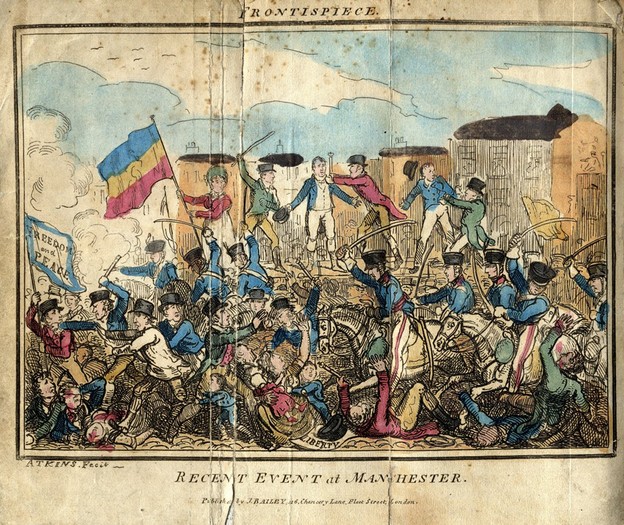
Romance

I have said that poetry is the spontaneous overflow of powerful feelings: it takes its origin from emotion recollected in tranquillity: the emotion is contemplated till, by a species of reaction, the tranquillity gradually disappears, and an emotion, kindred to that which was before the subject of contemplation, is gradually produced, and does itself actually exist in the mind. In this mood successful composition generally begins…. — William Wordsworth, "Preface to the Lyrical Ballads"
So first there is the break, the moment that cannot be contained; then time passes, one achieves some distance, one brings the surfeit back into thought, patiently reproduces its intensity but now as representation, as form. One realizes the truth of the original moment, but in a measured way. The measure, the bringing to heel of the original overflow, is precisely Wordsworth’s break between language and real life.
Now the music of harmonious metrical language, the sense of difficulty overcome, and the blind association of pleasure which has been previously received from works of rhyme or metre of the same or similar construction, an indistinct perception perpetually renewed of language closely resembling that of real life, and yet, in the circumstance of metre, differing from it so widely.
Surely we trust this as a true account of Wordsworth’s compositional practice. But is it not also an account of the French Revolution? Not as it transpired, but as the poet wished it to be, according to his famous reversal of judgment. First the overflow, the rupture of 1789 — then the measure, the bringing to heel, the cool recollection patiently reproducing the intensities of 1789 but now as form, as the aesthetic. Thus should have been 1793. Instead, the uprisings of the sans-culottes and enragés, who wanted more from the revolution than the recollected tranquility of natural right, and the consequent maneuverings of the Jacobins, who used the insurgency of the lower classes to cement their own police power.
It is easy enough for Wordsworth to say “the Terror” disdainfully, and shake his head, especially after the fact. It is easy enough, we suppose, to be against the second (or was it the third, or fifth?) spontaneous overflow, the revolution within the revolution, especially as these risings and coups become difficult to distinguish from counter-revolution. If you are poet like Wordsworth, it makes sense that you would argue, in the face of this topsy-turvy, that the time had come to trade the guillotine for the quill. Move to representation. Take yes for an answer.
This line of reasoning has particular seduction for those who work in the fields of representation: the idea that the act has in some sense been completed with the giving of form to what had been unsayable surfeit. In the Wordsworth transformation, poetry is The Not-Terror. Poetry is against kill lists. That’s part of why we found Josef Kaplan’s poem interesting. We are skeptical of the idea that poetry can hang itself by its own bootstraps; that idea seems largely an expression of an art turned entirely inward toward its own terms. But we like the idea that the puzzle of how to make a poem that is antithetical to the category “poem” might proceed via the Wordsworthian antinomy poetry/Terror — turning it against itself as it were. We do not think the poem was actually telling us how many people it intended to kill.
These mappings of one sequence on to another are inexact, of course, always inexact. And few would likely subscribe these days to a model of poetry as a mastering of events. If it is legislation, it is less acknowledged than ever.
We are interested and often confounded, however, by the idea that the spontaneous overflow and the measured representation can be reversed, a sort of formalist model of revolution wherein one brings it to heel before setting it loose. This idea comes up over and over again, both within and without the Land o' Poetry. Poetry, that measured schematization, aligns itself with something like engineering. If poetry is to say the word "revolution," to believe in it as necessity or inevitability or even possibility, it must therefore provide instructions and diagram. This demand appears now dipped in technique, now dripping blood: Show us your plan! How many people do you plan to kill? These are two aspects of but a single conception. The measured ideal of 1793 is mysteriously obliged to offer itself in advance of 1789.
This is a retrospective view of revolution. What appears only later as a timeline, as enumerable events with a systematic logic, somehow must have begun thus — extending from a schema, a formalization, a kill list composed in preparation. This imagination has an optimistic tenor, utopian even: with clear enough measure, good enough bookkeeping, things need not get too messy. There is the small logical problem that recollected in tranquillity cannot precede spontaneous overflow; if it did, we would simply live in a permanent regime of bookkeepers with no exit. Surely this is the most counter-revolutionary thought on offer. Wordsworth’s sequence recognizes, even with its counterfactual wish, that historical unfoldings are, well, historical; neither the best poet nor the worst stands astride them, guiding their course. It would be curious indeed to demand such a thing.